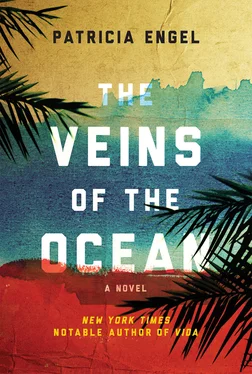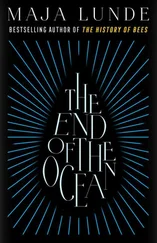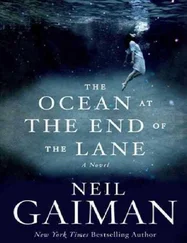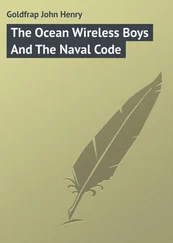They took her in and named her for the lab in Biloxi where she’s been held until being transported here. Roxi from Biloxi.
Rachel tells me she and the other trainers were assured Roxi has potential to perform and even to breed.
“How is it you teach them tricks and flips and all that?”
“We don’t teach them tricks . We encourage them to learn new behaviors.”
I don’t really see how you can call getting a dolphin to beach itself on the dock, deliver a rose in its mouth to an audience member, and offer its fin for a “dolphin handshake” anything but tricks, but I keep that part to myself.
“Okay, the teaching of behaviors. How do you do that?”
“We practice operant conditioning.” I can tell she likes the taste of big words in her mouth. “We change or create behaviors by using positive reinforcements, like food, as a reward.”
“Do you ever punish them?”
“Of course not!” She laughs at my misstep.
“What if they don’t do what you want them to do?”
“We just don’t reinforce the behavior until they get it right.”
“So you don’t give them food till they do what you want them to do?”
“We don’t acknowledge them until they demonstrate the desired behavior.”
“You ignore them?”
She shakes her head at me. “It’s not that simple, Reina. There are decades of research behind what we do.”
With that, she finds a reason to get away from me, and walks out on the platform extending from the dock between the new pen and the older one, holding two females, Belle and Bonnet. Roxi from Biloxi will live alone till they add her to another pen with resident female dolphins or find her a new companion.
I watch Nesto work on the pen and think of when I started working full-time and Mo told me how happy the animals were. So much so that even though the fence keeping them in extends barely a foot above the water, and the dolphins can easily jump over it to get out, they never even try. Even during hurricanes, when the enclosures sometimes broke open, Mo told me, if the dolphins swam out into the gulf, they were easily coaxed by their trainer’s whistles to return to their pens the next morning.
I remember when Carlito and I were kids, an early summer tropical storm once ravaged the local aquarium, busting open the bayside wall of the dolphin cove so the six dolphins inside were released to the open water. They were quickly spotted by people on the same bridge where Carlito and baby Shayna had both been dropped, doing their routines at all their regular showtimes, flipping and tail-walking and pirouetting, waiting for their rewards. People gathered on the causeway and adjacent beaches to watch the show. The dolphins, accustomed to the sight of a crowd, came closer to shore and it wasn’t long before the aquarium people arrived in boats to collect them.
There was some noise about leaving them free, but the aquarium people used the footage of their routines in the wild to show that the animals were desperate to return to the aquarium. They loved performing, their minders told the reporters, and the aquarium was their home.
That was all it took.
Now it’s just a story that locals tell: the case of the escaped dolphins performing in the ocean the routines that humans had taught them.
I still remember Mami’s face watching the news coverage, the way she shook her head and said it was pathetic how those dumb animals had missed their one maldito chance to be free.
I don’t know when it happens.
The moment when I can no longer just go about my job and walk past the dolphins in their pens, thinking of them as our gentle and docile residents.
Maybe it’s after Jojo takes me out on the boat and I see the others swimming long straight lines, diving deep, not in shallow narrow loops like these dolphins, contained by fences.
Maybe it starts long before, when, during my rounds, I pause by their pens, wondering about their assorted histories that usually only go as far back as their previous ownership.
I think the point of rehabilitation is to let them go, and maybe use a place like this as sort of a halfway house on their journey back to the open ocean. But as with Rachel, whenever I ask too many questions, the trainers, techs, and vets just walk away from me, and I have to go back to my work, circulating through the facility, asking tourist families if they’re all having a good time, trying to convince them to sign up for the Swim with Dolphins program, a big moneymaker for the park, telling them how it’s a great opportunity to have “a natural experience” with the animals, just like I’ve been prepped to do, even when, if they stopped to take a look at the larger picture of all this, they’d see there is nothing natural about it.
The trainers use the dolphins that were born at the facility, not the ones who once knew life outside these man-made lagoons. And when the hour is over, the people come out of the pen with a look of enchantment. They don’t notice it’s a one-sided solace. The dolphins are hungry, working for each reward of water-injected mackerel popped into their mouth.
Sometimes a visitor will get mouthy on the trainers, having seen a documentary or read an article about the cruelties that can happen at marine parks or how the dolphins are stolen from the ocean, but the trainers never lose their show-grins, responding that the dolphins love their home here at the facility, and then they point the visitor to Oliver, a dolphin who washed up near Sarasota, bleeding to death after a shark chomped away half of his dorsal and fluke. A dolphin like that would never last in the wild, the trainers say. And it’s true. Here at the dolphinarium Oliver has a chance to live a safe life, even if the dolphinarium has recently received citations for not providing enough shaded areas for the animals in their enclosures, which the inspector said violates the Animal Welfare Act.
“But if this is really some kind of refuge,” a teenager once asked Rachel, “why do you breed them?”
“Breeding is part of our commitment to conservation.” Rachel gave her standard reply, even though the bottlenose dolphins bred here aren’t considered endangered.
The park visitors remark what a beautiful dolphinarium this is, where the animals swim in real seawater, not in the chlorinated clear water of aquariums around the country, with concrete and glass tanks.
Mo and the staff talk about captivity like it’s the best thing a dolphin can hope for, but that kind of talk just makes me think of Carlito and all the years he spent trapped by the routines of prison life in a six-by-nine-foot prison cell, the size of a parking space, and what Dr. Joe used to say about inmates like my brother who were also sentenced to solitary confinement: “It doesn’t have to be violent for it to be torture.”
We are back at my cottage. Nesto is exhausted from his day on the fence, eager to shower and wash off the sweat and saltwater and rest his back before having to get up to do more of the same work tomorrow. I don’t ask why he didn’t come to see me the night before or even that morning. I only ask how his trip went but he offers few words in response.
“It was normal ,” he says. “Just normal,” adding that everyone is having as hard a time as ever and all he accomplished by going home to Havana was to refresh his ever-broken heart.
I watch as he steps out of his jeans, pulls off his shirt, tosses them onto a pile on the floor, and walks into the shower, singing, “ Parece que el ciclón ya se fue y ya se pueden ver las estrellas, parece que la vida cambió y yo cambié con ella . .”
When he comes out, a towel around his waist, flopping onto the bed, his eyes closing with fatigue, I climb onto the bed and straddle him over his towel, not because I missed his body so badly while he was away — I did, very much — but because I can’t wait to tell him about what happened while he was gone, how I went out on the boat with Jojo and what he told me. But when I’m through with my story, Nesto can focus only on the detail that I climbed onto a boat with a total stranger.
Читать дальше












